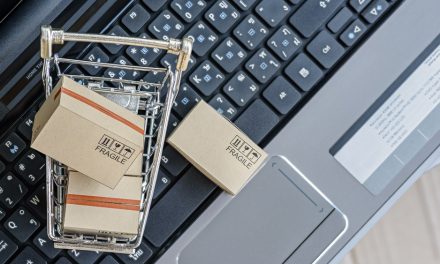
Customer experience is at a crisis point!

Mike Richmond, Chief Revenue Officer at Doddle says a digitally-powered delivery experience could help rebuild consumer trust.
“More than a quarter (28%) of UK online shoppers said that their experiences in December 2022 caused them to lose trust in parcel delivery companies. In addition, more than a third (39%) said they would consider avoiding a specific delivery company in the future.
This data comes from a Doddle-commissioned YouGov survey of UK consumers in January. The upshot of our research is that carriers are risking long-term brand and reputational damage by failing to invest in their delivery experience. When capacity shocks occur, like the one we saw in peak 2022 as a result of the Royal Mail strikes, it’s understandable that parcel carriers struggle to meet expectations. However 62% of shoppers suffering at least one delivery issue in a critical shopping month is unsustainable, and comes against a backdrop of poor performance in traditionally less-demanding periods as well.
While UK carriers remain generally in solid financial health, negative consumer sentiment has to be understood as an existential challenge, particularly when 42% of customers are considering switching retailers over carrier preference. If this starts to happen at scale, it will reduce revenue for some carrier’s customers. The feedback from them will be much harder to ignore.
Consumer trust breaking down during December
Strikes and capacity challenges plagued the UK’s parcel delivery companies in the month of December. As a result, the customer experience suffered: more than 6 in 10 consumers (62%) experienced delivery issues across December. The most common issue was late deliveries, which struck 41% of shoppers – a particularly sensitive issue for gifts.
More serious issues were also not uncommon:
- 10% of consumers had one or more of their parcels lost by the delivery provider
- 13% of consumers had a missed delivery
- 9% of consumers had a parcel delivered to the wrong address, or left in an unexpected location
The consequences in terms of consumer perceptions have been swift. Over a third of consumers said they would consider avoiding specific delivery companies as a result of their experience in the winter. 42% of respondents said they would consider moving to another retailer to use a preferred parcel carrier – a shift that could make visibly displaying carrier brands on the checkout vital to consumer trust and conversion rate. Or, depending on the parcel carrier and the retailer’s perception of them, it might become more vital to keep the brand hidden.
Those brands who can point to a conversion increase when their logo appears at the checkout are suddenly having a different new business conversation. Their sales pitch is not just on service level and price – it’s now about conversion, as those carriers have realised that they can actually be the reason some customers will click ‘buy’.
Either way, consumers becoming more discerning about who is delivering their parcels is liable to make retailers even more selective when it comes to delivery partners. Merchants will figure out a way to ensure consumer trust and maintain conversion, it’s what they do. Parcel carriers with long-term ambitions to grow market share need to be sure they’re helping that process, not hindering it.
Longer term reputational difficulties
It might be unfair to use a short-term capacity shock to judge carrier performance. The problem is that the long-term view is not rosy either, in both brand perception and customer experience. Citizens Advice delivery league tables paint a picture of frustrated consumers dealing with repeat errors, hard-to-reach customer service and other niggles and challenges that don’t add up to quality service. Some have taken issue with the league table methodology, and pointed to internal metrics which tell a different story – that is all well and good, as long as this continues to be convincing to retailers.
The problems in UK delivery experience are not really about survey methodology or one-off strikes. At the root is the fact that carriers are forced to find every efficiency possible in an ultra-competitive market to make a fundamentally inefficient service (home delivery) viable for the share of deliveries it’s asked to handle. That turns what should be a great experience into a routinely stressful and awkward affair, in the service of maximum scale and profitability.
Today it’s only a minority of shoppers who feel that carriers aren’t good value for money, but it doesn’t have to be a majority to start really affecting merchant perception. As issues continue and performance doesn’t improve, those consumer perceptions will continue to corrode brand value. At some point merchants won’t be able to ignore this, and new business conversations will become much harder to have for carriers who can’t prove the positive impact of their brand.
How to rebuild consumer trust and brand perceptions
Most of the common delivery issues identified through this could become less frequent in future, if more carriers can develop a consistent connection with the end consumer and the digital infrastructure in place to react to their needs. While app downloads for carriers are scaling quickly, utilisation rates are low – and few shoppers will have the full gamut of carrier apps required to manage each delivery they might receive. Even for those “professional shopper” types who do have all the apps downloaded, there are limits to how useful even the best apps are for managing deliveries.
Improving tracking and customer communications should mean moving from sporadic email touchpoints to a unified stream of information, across whichever channels the consumer prefers, from either the retailer or the carrier (but ideally not both), based on real-time data. This alone would be a massive step forward for consumers who typically today receive a fragmented and minimal picture of what’s happening with their parcels, from multiple sources.
Now, third parties from Klarna to Google are building consumer-focused technology to try to help shoppers manage their various orders, by scraping email accounts for tracking emails. That big tech businesses are reverse-engineering a solution like this should show how much there is for carriers to improve when it comes to their own communications, and how valuable it could be to achieve.
Another goal should be to capture as much information about customers in advance of the delivery – if they’re happy for items to be left safe, or with a neighbour, in which case where is the best hiding place and who is the right neighbour? Alternatively, maybe it’s best to divert to a parcel locker down the road. Today, even the best at this post-purchase experience are often unable to divert a parcel like this in real time, requiring it to return to the depot and head back out a day later on the dedicated PUDO or locker route. So the parcel that was already coming to the doorstep was unable to be safely and definitely delivered first-time at the locker 200 metres down the street, because the customer isn’t asked in advance, just on the day, and because the driver app doesn’t talk to the routing software, so it’s safer to default to bringing the parcel back to the warehouse again.
Regaining consumer trust and confidence is about giving shoppers clarity, options, and a sense of control all the way through the parcel’s journey – from the checkout right up to the day of delivery.
What’s going to happen
There will always be space in the delivery market for low-cost offerings with less of a focus on customer experience. How much space, and how that segment will actually receive deliveries, is to be seen. Arguably it makes more sense for cost-conscious shoppers to be pushed to use cheaper, consolidated delivery service, including out-of-home options like lockers and PUDO, as well as consolidated home deliveries where possible, like Amazon’s Delivery Day service, which aggregates a week’s worth of deliveries into one day.
Regardless, carriers continuing to offer a similar experience in future as they do today should be understood as a risk rather than a safe decision. Brands and reputations will continue to tarnish under pressure from frustrated consumers, even if these remain a minority. Some logistics providers will get tooled up with the right digital infrastructure to offer consumers more control and confidence, some will opt to keep their profitable businesses running as they do today and eschew the extra investment in CX.
Consumers today aren’t often made aware of who will be delivering the parcel when they order online. But as significant minorities plan to change their shopping habits as a result of delivery experiences, more retailers will clarify who their delivery partners are – if they think that doing so will reassure customers. Measuring that impact will give retailers another key performance indicator to hold up against prospective delivery partners. Whose brand adds value to a checkout, and whose does not?
Everyone should want to be in the former camp, and there’s space for different brands with different reasons for customers to prefer them. Offering the status quo probably won’t put a carrier on the right side of the scales, but a digitally-powered customer experience that offers control and confidence probably will. Similarly, offering consumers more options and delivering more reliably through intelligent customer profiling and data capture adds value.
Putting together this digital delivery management infrastructure is a crucial next step for carriers, not just to improve the experience of having a parcel delivered but for the future of their brands. Doing so will allow them to reach more checkouts, deliver more parcels, and do so more reliably and cost-effectively.”
About Mike
 Mike is responsible for Doddle’s engagement with postal organisations and parcel carriers, working with them to improve their out-of-home delivery propositions and helping them to increase consumer preference for out-of-home delivery methods. Mike joined Doddle in2014 and has had roles in strategy, overseeing sales and marketing, and is now fully focused on the carrier market. You can find more from Mike on the Doddle website or on LinkedIn, or email him [email protected].
Mike is responsible for Doddle’s engagement with postal organisations and parcel carriers, working with them to improve their out-of-home delivery propositions and helping them to increase consumer preference for out-of-home delivery methods. Mike joined Doddle in2014 and has had roles in strategy, overseeing sales and marketing, and is now fully focused on the carrier market. You can find more from Mike on the Doddle website or on LinkedIn, or email him [email protected].










